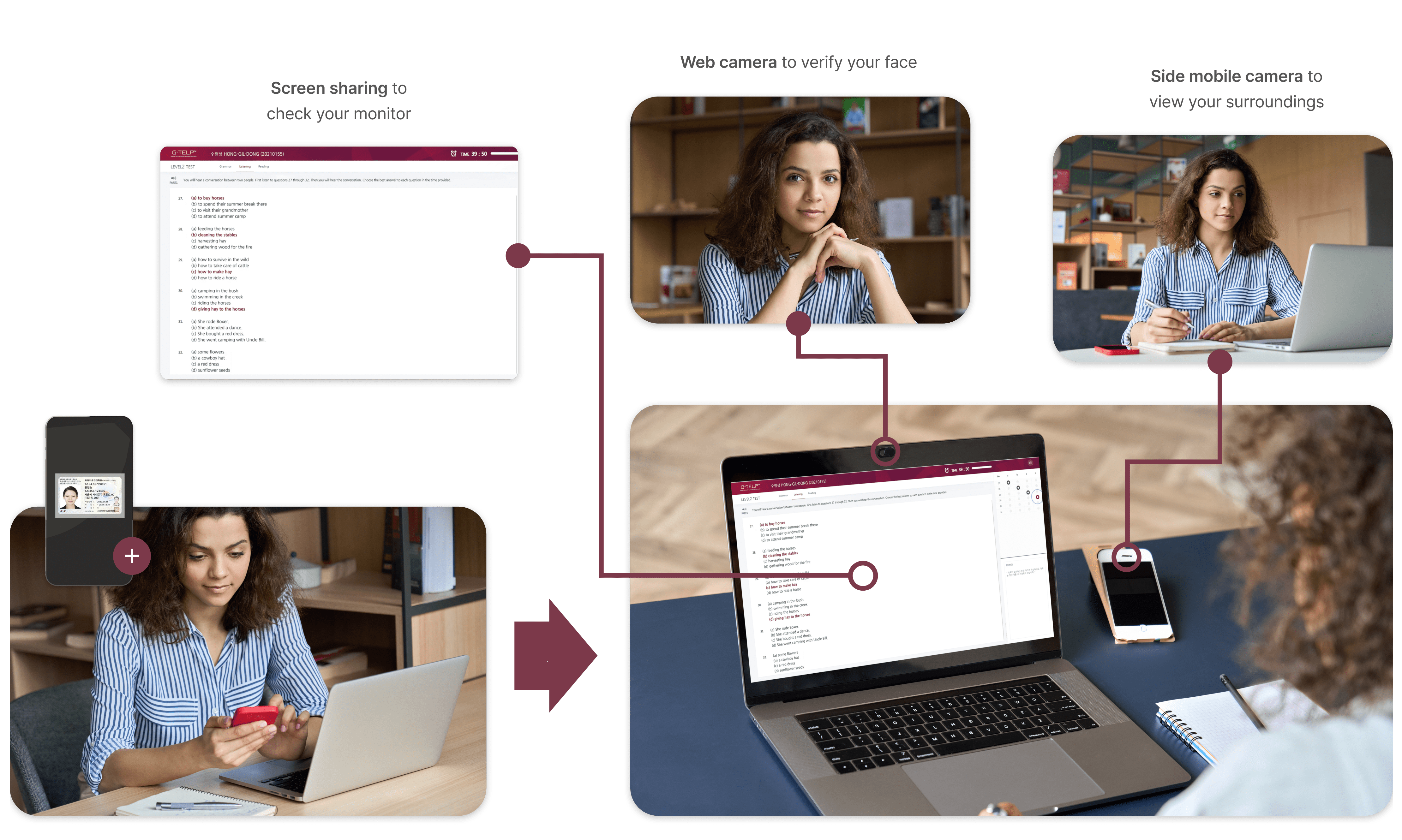Pre-register
Your Photo ID
Your Photo ID





| PC or Laptop | ||
|---|---|---|
| Operating system | Windows 10 or higher | Mac OS 10 or higher |
| CPU | Quad Core | Quad Core |
| RAM | 8GB | 8GB |
| Browser | Google Chrome only | |
| Headset and microphone | Connecting to a PC or laptop, Microphone (only GST) | |
| Mobile phone (For side monitoring) |
Android 5.0 or higher / iOS 10.0 or higher
Google Chrome: 10.0 or higher / Samsung browser: 12.0 or higher Mozilla Firefox 10.0 or higher / Safari 12.0 or higher |
|
| Network | 5Mbps or higher | |
| Test Type | Simulated Oral Proficiency Interview |
|---|---|
| Duration | Approximately 35 minutes |
| Questions | Around 30 questions divided among 11 parts |
| Levels | Levels 1 to 11 |
| Criteria | Content, Grammar, Fluency, Vocabulary, Pronunciation |
| Duration of Score Validity | Two years |
| Task 1 | Giving Personal Information Answer simple questions about yourself and family, responding in words, phrases, or simple sentences. |
|---|---|
| Task 2 | Describing a Familiar Setting/Objects Name and describe a familiar setting and the objects within that setting. |
| Task 3 | Describing Habitual Activities Name and describe personal activities. |
| Task 4 | Narrating a Story from Pictures Relay a simple narrative illustrated in a series of pictures. |
| Task 5 | Expressing and Supporting an Opinion Present a personal opinion and express personal preferences, and substantiate these opinions or preferences with at least two simple supporting arguments. |
| Task 6 | Giving Autobiographical Details About a Place or Event Describe a place or event in adequate detail. |
| Task 7 | Responding to Requests for Information About Places of Interest Construct appropriate and well-formed questions and responses in a dialogue centering on requests for information. |
| Task 8 | Discussing Advantages/Disadvantages of Two Related Objects Compare and contrast the objects by giving at least two advantages and/or disadvantages of each. |
| Task 9 | Giving Directions Using a Map Give directions to a location clearly and thoroughly, so as to enable a listener to understand what route should be taken to reach a destination. |
| Task 10 | Presenting a Solution to a Specific Problem Clearly state and express a position on a topic and present convincing arguments supporting that position. |
| Task 11 | Presenting a Solution to a Complex Hypothetical Problem Explain, with relevant and convincing detail, how to solve the problem(s) associated with a hypothetical situation. |